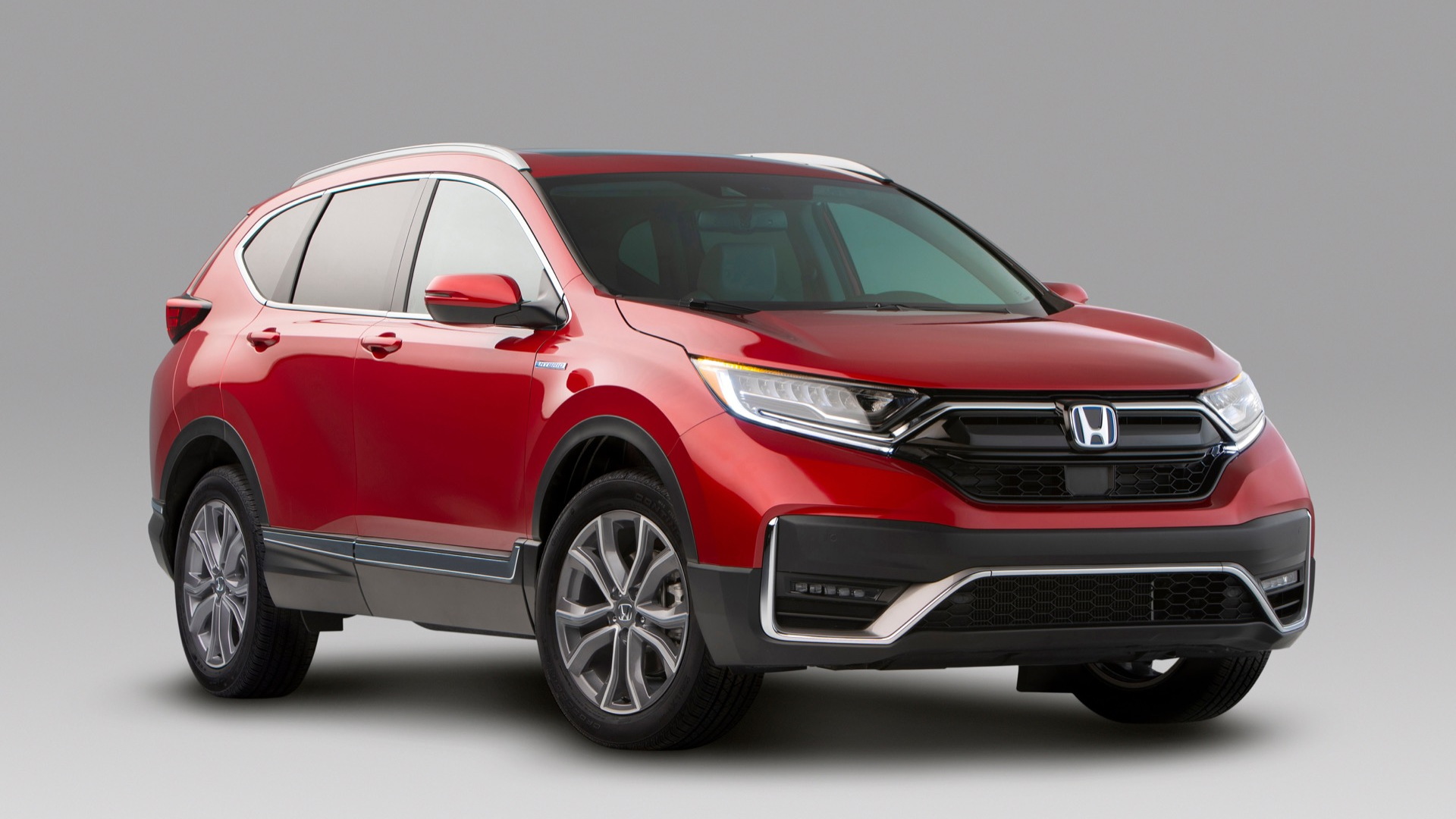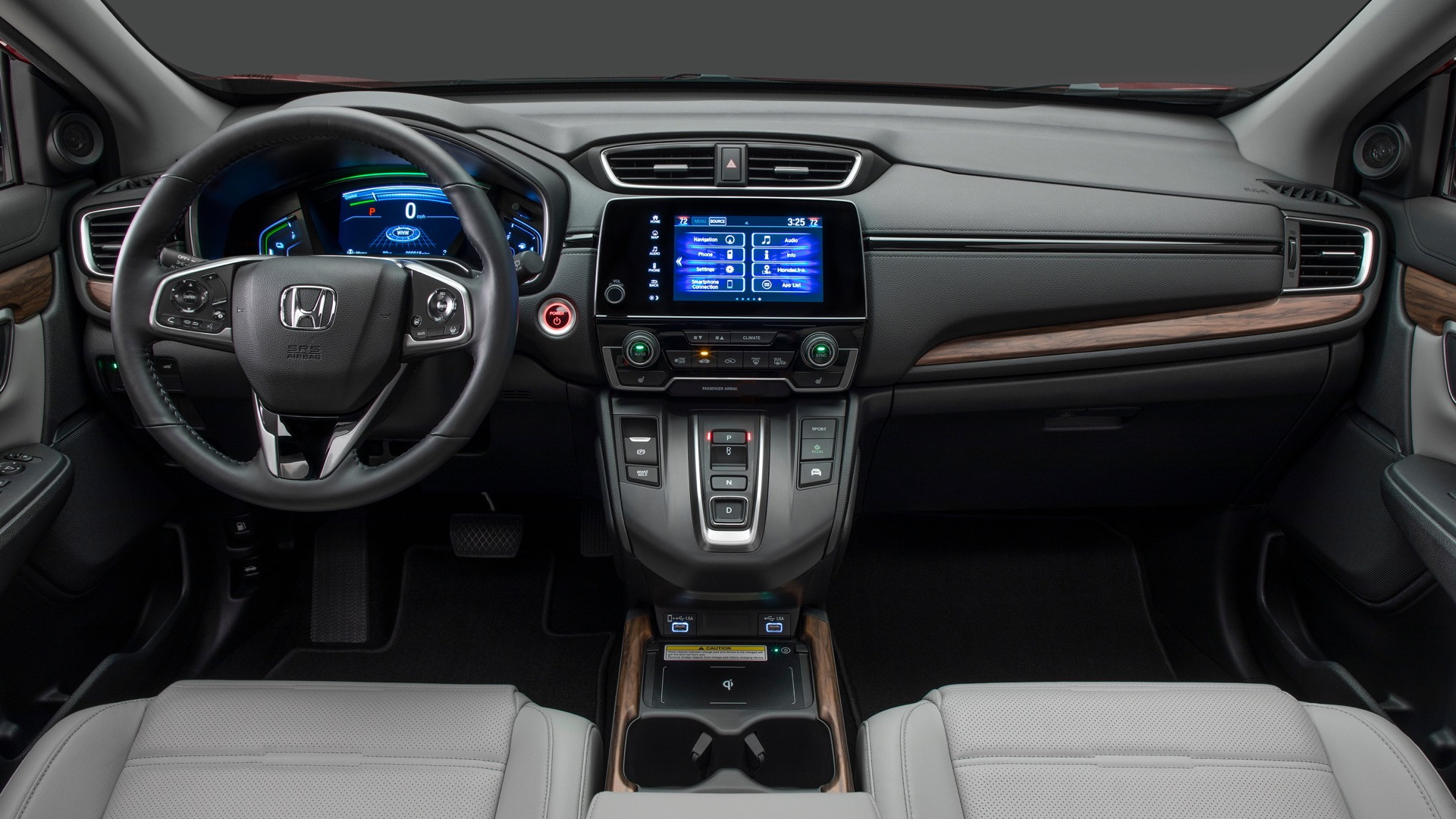Honda is at last revealing the first electrified SUV for its U.S. lineup, and it’s a hybrid version of the brand’s best-selling model in the U.S., the CR-V.
The automaker has announced that this higher-mileage 2020 Honda CR-V Hybrid will be U.S.-produced and widely available. It leads Honda’s plan to electrify the brand’s light trucks, and beyond that the carmaker is moving “to apply its advanced two-motor hybrid-electric system to all of its core U.S. models in the years ahead.“
What makes the CR-V different from any of Honda’s other i-MMD hybrids so far is that it comes with available all-wheel drive—engaged through an electronic clutch system.
The CR-V Hybrid’s powertrain is otherwise shared with that of the Accord Hybrid. The i-MMD hybrid system, also called the two-motor hybrid system, combines two electric motors with a 2.0-liter Atkinson-cycle inline-4 engine that Honda boasts has a thermal efficiency of more than 40 percent.
Honda’s hybrid system, as used in the Accord, the Clarity Plug-In Hybrid, the Insight, and now here, is particularly elegant in that it involves no conventional transmission or hybrid torque-split device. One of the motors is geared directly to the engine, while the other motor is on the other side of a clutch, geared to the differential (and drive wheels).
In most types of driving it functions as a series hybrid, with the system running that engine-linked motor as a generator, but in light-load cruising it engages the engine directly to the drive wheels, via a tall single drive ratio.
Honda anticipates a 50-percent boost in EPA city fuel economy, which would place the CR-V Hybrid at about 45 mpg city. That would place it above the 2019 Toyota RAV4 Hybrid, at 40 mpg combined (41 mpg city, 38 highway). But we’ll have to wait and see how U.S. EPA figures arrive, as in European driving cycles the CR-V Hybrid hasn’t returned efficiency numbers quite as high as the Toyota RAV4 Hybrid.

2020 Honda CR-V and CR-V Hybrid
As part of a revamp to the rest of the model line, the former 2.4-liter inline-4 is gone from base models, replaced by the 1.5-liter turbo-4 that used to be the step-up engine. Non-hybrids all have a continuously variable automatic transmission.
Non-hybrid CR-V models earned 30 mpg combined (28 mpg city, 34 highway) with front-wheel drive, or 29 mpg combined (27 mpg city, 33 highway) for 2019. EPA figures aren’t yet out for the 2020 model year.
The CR-V Hybrid will look a little bit different than other models. Headlights are dark-tinted, there’s a dark-chrome treatment below the rear glass, and the tailpipe is “hidden.”
Inside Hybrids get a push-button gear selector, with three switches for Econ, Sport, or EV modes. Econ mode softens throttle response; Sport sharpens it and adds Active Sound Control supplementation via the speakers. EV mode widens the electric-only operating window when there’s enough charge.
Safety equipment has been expanded for the entire CR-V model line for 2020 As part of a full suite of driver-assistance technologies, called HondaSensing, the CR-V Hybrid comes with active lane control, active cruise control, and a low-speed pedestrian-warning system.

2020 Honda CR-V Hybrid
The CR-V Hybrid will arrive in early 2020 for the U.S. and be built in Greensburg, Indiana, alongside the CR-V and the Insight hybrid sedan. The engine for the CR-V Hybrid will be assembled, in Anna, Ohio, and its motor system will be made in Russells Point, Ohio.
Honda is committed to electrifying two-thirds of its global fleet by 2030. In North America, at least for the early part of the decade, that means at last going big on its hybrids.
The CR-V Hybrid has already been on sale for much of the year in Europe, where it’s been well-received as Honda’s replacement for diesel. With the Toyota RAV4 Hybrid already a significant portion of RAV4 sales, and a new Ford Escape Hybrid soon arriving, we’re glad to see such a big piece of the market taking such a large efficiency leap.



















